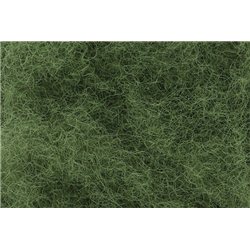Generally, plastic model plane kits do not come with plinths supplied. Nowadays, the majority of kits are designed to...
No products
Product successfully added to your shopping cart
There are 0 items in your cart. There is 1 item in your cart.
Search Tips
Christmas and New Year
We are dispatching orders every weekday apart from Christmas Day, Boxing Day and New Year's Day.
If you order is time critical, select next day delivery at checkout.
The shop in Sandown is closed from 25th December, reopening on 30th December.
What is poly fibre?
Poly fibre is a synthetic material commonly used in scale modelling and model railway landscapes to create realistic foliage, shrubbery and tree canopies. It's a lightweight, flexible material that can be easily manipulated to mimic natural forms and textures, making it a go-to choice for modellers aiming to add a layer of realism to their dioramas and miniature scenes.
Poly fibre usually comes in thin, web-like sheets or as a loose, tangled mesh, which you can pull apart to create various densities and textures. When stretched, it forms a delicate structure ideal for representing light foliage on trees or shrubs. Its flexibility makes it easy to shape around armatures (small wireframes that act as tree trunks and branches), allowing you to build realistic trees or hedges with an organic, natural feel.
Using poly fibre in your model can be as simple as tearing small pieces and gluing them directly to the model or armature. Once in place, you can add a layer of scatter material, like foam flock or turf, to give it the texture and colour of leaves or needles. The combination of poly fibre and scatter material helps create depth, making your foliage look fuller and more lifelike. This layering technique is particularly effective for creating the dense, multi-tonal effect of real greenery.
Poly fibre comes in green but it can also be easily spray-painted or airbrushed. This versatility lets you match it to different seasons and environments, whether you want spring’s fresh greens, autumn’s warmer hues, or even a winter’s frosty, muted tones. Many modellers find that painting poly fibre after it's been placed and shaped offers the best control, letting them add subtle colour variations that closely resemble natural foliage.
Another benefit of poly fibre is that it doesn’t shed or break down as natural materials like moss or dried leaves might, ensuring a durable, long-lasting finish on your model. This resilience makes poly fibre a reliable choice for hobbyists who want to create lasting landscapes without the risk of their foliage deteriorating over time. Its durability also makes it ideal for handling and transport if your models are part of a display or exhibition.
Poly fibre is relatively affordable and widely available at model shops and online retailers across the UK. Brands like Woodland Scenics are well-known for high-quality poly fibre. It's a cost-effective way to add a substantial amount of greenery to a scene without investing in more labour-intensive or fragile materials.
Overall, poly fibre offers modellers a versatile, easy-to-use medium for creating convincing foliage. Whether you're just beginning with scenery bu
Click here to receive the tips weekly in your mailbox. You can unsubscribe at any time.








